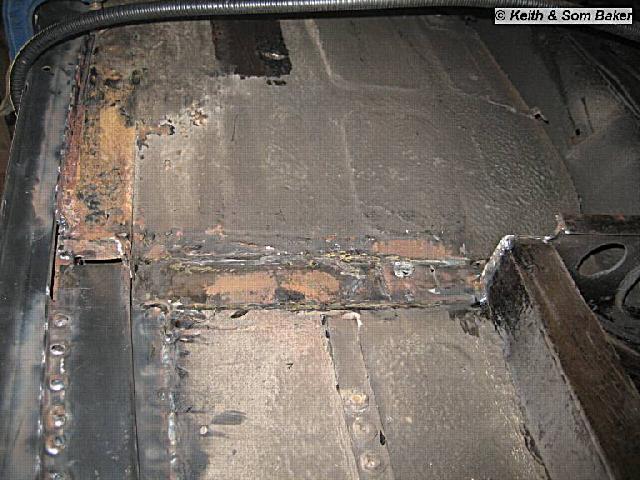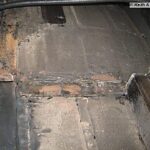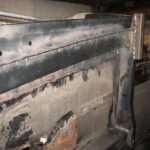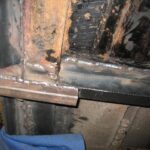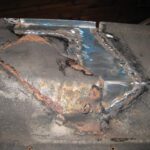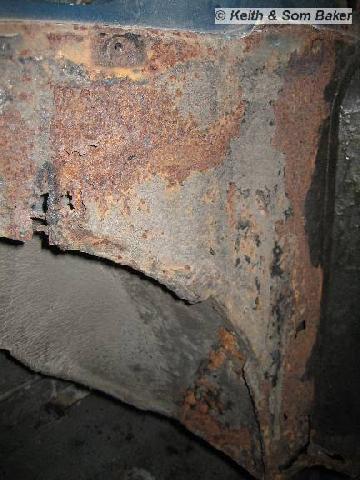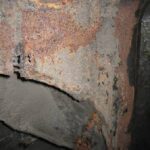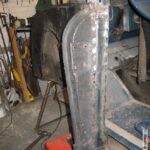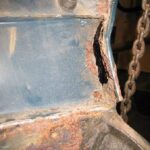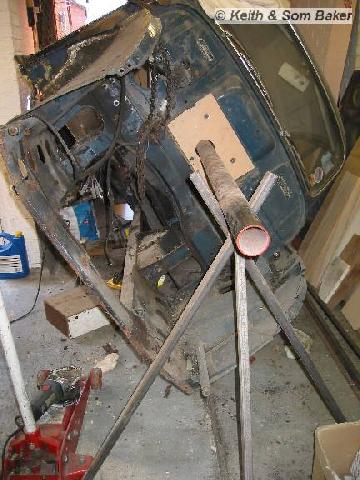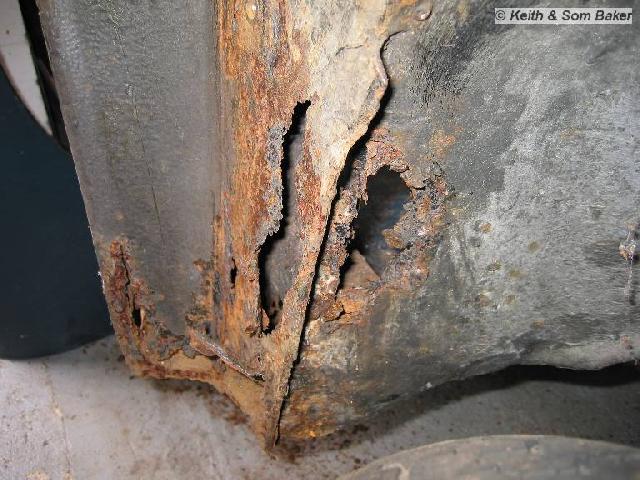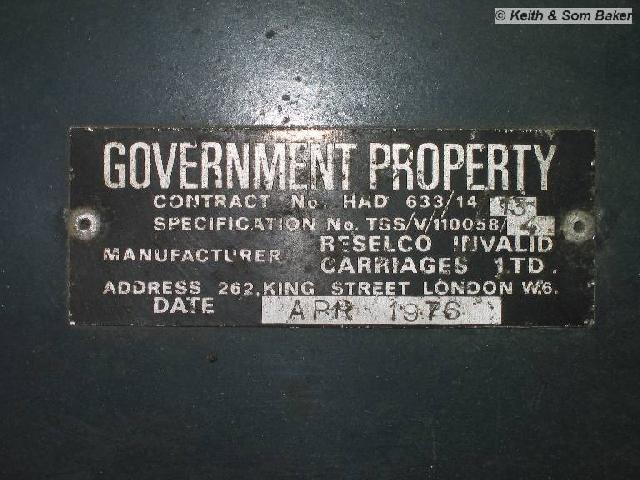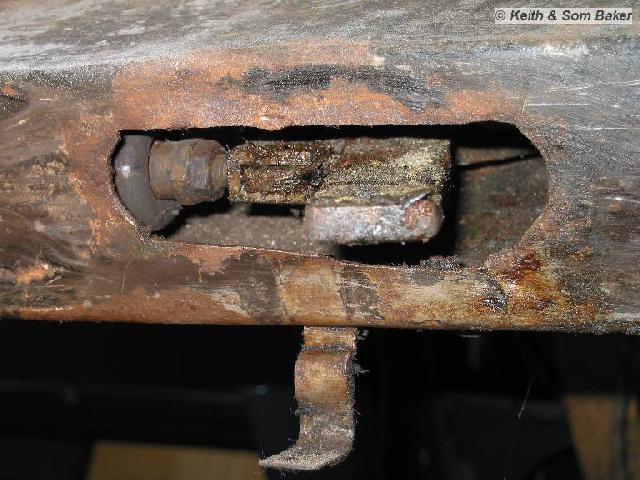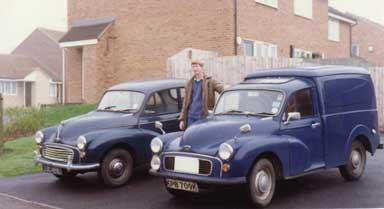Outer sill replaced and front part of the inner sill. The back part was ok even though just a bit of rust by the cross member.
Cut out the end part of the cross member. The floor is not very flat there as it had already been patched when the cross member was replaced first time around. That was done by the garage I bought the car from – they must have cut through the floor to get it out! It wasn’t very neat but was strong!
Minor patch in the boot area is around the spare wheel retaining bolt.
Unfortunately located another lacy bit on the rear wheel arch so had to cut and insert a section.
For cleaning off the the welds / underseal / paint I’ve been scraping with an old paint scraper, then using the wire brush on the angle grinder. The flat version is better than the cup for all the corners.
The intention was to clean off loose bits and welds and prime with spray can etch primer. Then use the Gravitex stonechip to underseal. The Gravitex is supposed to be able to cover anything and also be overpainted. The old underseal is oil based stuff and goes soft with the Gravitex which is cellulose based. On my test area it didn’t react and went hard again after a week. Hopefully a larger area will do the same – we shall see !
The remaining rust you can see is surface, except the area in the floor under the exhaust heat protector, which is a bit of a water/rust trap.
Whilst cleaning off with the wire brush on the angle grinder I made a hole as what I thought was surface rust disintegrated.
Much of the cleaning off has been with the angle grinder plus wire brush; prior to that I got rid of old underseal using a paint scraper and old oil with white spirit.
The areas of sound body with sound underseal I ran over lightly with the angle grinder brush to get rid of the dusty dry surface and provide a key for the Gravitex.
